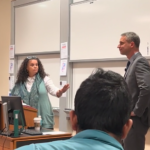Division at Home Can Subtract from Math at School
Money can buy a lot of things, but a good education may not be one of them. Yesterday, the National Assessment of Educational Progress released its two-year report, and it’s not exactly a glowing one. The bottom line is that education spending may be higher — but students’ tests scores aren’t. Despite burning through more dollars in five years than George W. Bush did in eight, kids in elementary and middle school are performing at their worst math levels in 25 years. That news came as a shock to the academic system, as experts scrambled this morning to explain the plunge. “This isn’t a pattern that we saw coming,” said the acting commissioner of the National Center for Education Statistics. “It was an unexpected downturn.”
Based on the most recent “report card,” only a third of 8th graders enrolled in public schools can read and do math at their grade level. And fourth graders aren’t faring much better. Just 40% were at or above the proficient level in math this year. Even less (36%) could read at the prescribed standards, putting them at the lowest level possible: “below basic.”
While educators blame a variety of factors, Common Core seems to be an obvious culprit. William Bushaw, who helps set the policy for these tests, called it “curricular uncertainty,” which is just code for the negative impact this controversial (and unpopular) policy is having on the districts implementing it. In a media call to discuss the results, Education Secretary Arne Duncan admitted that it was “obviously not great news” but urged states not to throw in the towel on Common Core.
For most parents, who already object to Washington’s classroom takeover, it’s too late. Seven out of 10 U.S. 8th graders can’t read and do math at their grade level — and liberals want to give the government more control over education? They can’t even defend the system they have! While kids are learning plenty about sexuality, secularism, and government dependence, the real subjects are getting the shaft. Meanwhile, that same anti-family agenda is exactly what’s helping to drive students’ scores down. Just ask FRC’s Dr. Pat Fagan. MARRI (Marriage and Religion Research Institute) has shown a clear correlation between family life and educational outcomes. In study after study, children who come from intact married families score a lot higher on math and verbal tests than their peers. In some cases, it can mean up to a 23-point difference!
The same holds true for kids that worship regularly. They perform almost 10% better than the ones who never go to church at all. And it isn’t just math and other scores that suffer from broken homes. It’s the students’ grades, graduation rates, behavior, and even college acceptance. If Congress wants to improve test scores, then it should start by recognizing the unique role families play in that success. Otherwise, the leaders spending our money won’t be the only ones who can’t do math!





